SEO is a Garden a.k.a. The Parboil Strikes Back


Today on the Mediavine blog, we’re throwing it back to 2017, famously known to SEO experts across the web as the Year of the Parboil.
It was never actually known as such, of course, but an experiment from back then remains instructive and shapes our SEO strategies today.
A blog post I wrote titled Improving Your Rankings with Google Search Console ensured that the Food Fanatic team would never see the word “parboil” the same way again.
If you don’t have that 2017 post bookmarked, I forgive you, but check it out via the link above to see why we chose parboiling and ended up partially boiling a ton of different starches and vegetables.
The summary for those just skimming this: We used Google Search Console (GSC) to find posts we were getting search traction on, yet were still ranked outside the top three.
We architected a related content strategy around that term, and developed supporting content that linked back to our cornerstone content – how to parboil.
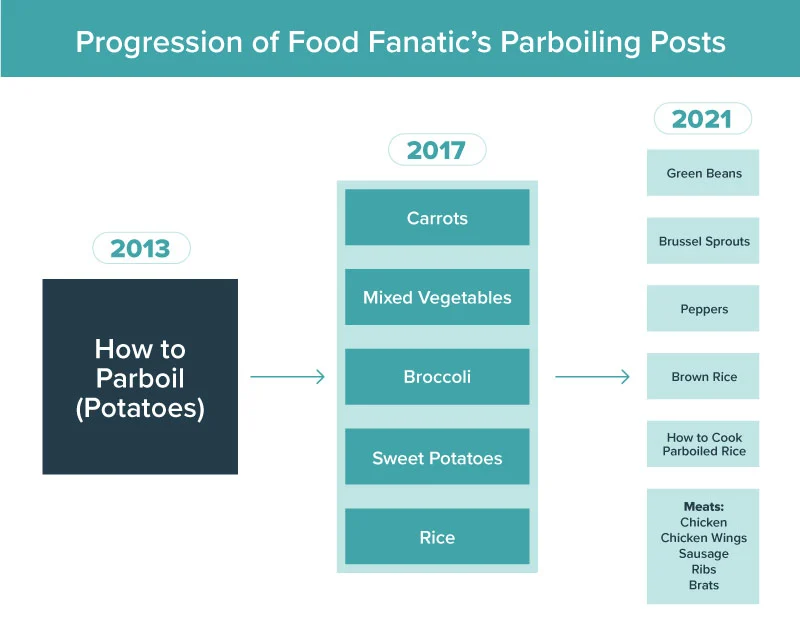
Our parboiling ranking slowly but surely improved.
If you’ve heard me give a SEO talk before, you’ve likely heard a line that I’ve been using ever since I stole it from Joshua Daniel Rodrigues Unseth around 2014:
SEO is like a garden. Keep maintaining it and it will grow beautifully. Let the weeds take over and your parboil rankings will drop before you know it.
If you haven’t guessed, we can speak from experience because Food Fanatic indeed let the weeds take over.
But that’s not the end of the story. By returning to that garden and refreshing our content with a little love, our parboiling ranking has returned and then some.
Check out this GSC snapshot to see:
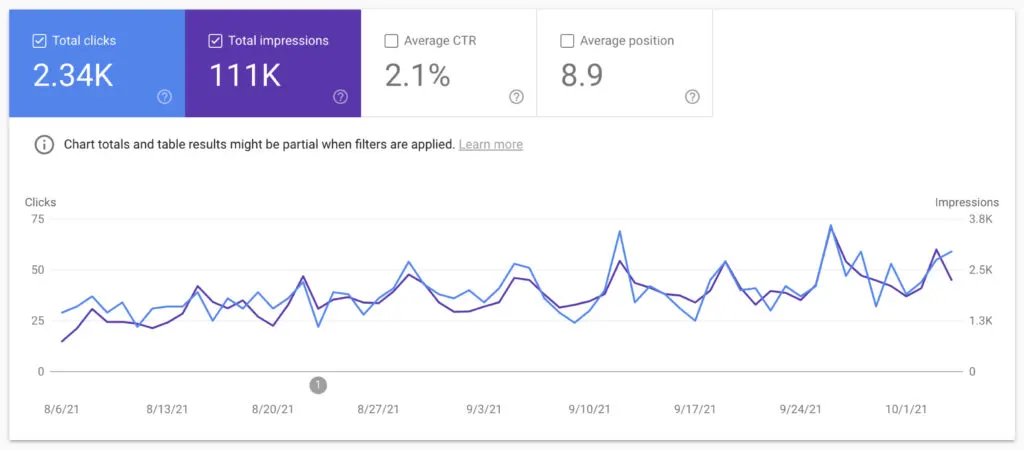
Now that I have your attention, let’s get into the weeds … sort of literally!
You’re about to draw upon so many lessons you’ve learned from my SEO Like a CEO series through the years. Beginning with:
If you’ve read my site structure post, you likely remember this tip.
Make sure your cornerstone content is linked from your homepage, via a link in your navigation (top is best, sidebar is second best, footer is last best).
If you run a static homepage, you can accomplish this via a Popular Posts section, a Best Of section, or whatever else you can come up with.
Here’s the key, though: You’ll want to make sure that the cornerstone content, e.g. “How to Parboil,” is one “hop” from the homepage.
In other words, that there’s always a link from the homepage to this content.
This is explicitly stated advice from Google, if you don’t want to take my word for it. Whether you trust me, Google, or both, I can’t stress how crucial this is.
Sadly, we didn’t have this when the crabgrass and fescue invaded our parboil garden (first time that sentence has ever been written) and our content from 2017 got buried.
File that under lessons learned, but also problems solved: We’ve since added a quick, top-level navigation of Popular and added a link to “How to Parboil,” as well as other top posts.
We’ve said it before, but Google and users love fresh content.
It doesn’t matter who you are or what you’re searching for. Are you more likely to open a post that was last updated eight years ago or eight days ago?
Our original parboiling post is in fact from 2013, but that doesn’t mean it’s outdated. We’re still updating it so that readers (and Google) see a current version.
We added fresh photos (it helps that our new Food Fanatic editor is a great photographer) and freshened up the content enough that Google would consider it updated.
We then changed the updated / modified date – NOT the publishing date.
(If you think I’m anti-deleting content, you should see how I feel about re-publishing. Don’t do it! Update the old. Update it some more. Resist the urge to re-publish!)
Armed with this updated content and a shiny new modified stamp, it wasn’t long before we saw the fruits of our labor with fresh search results:
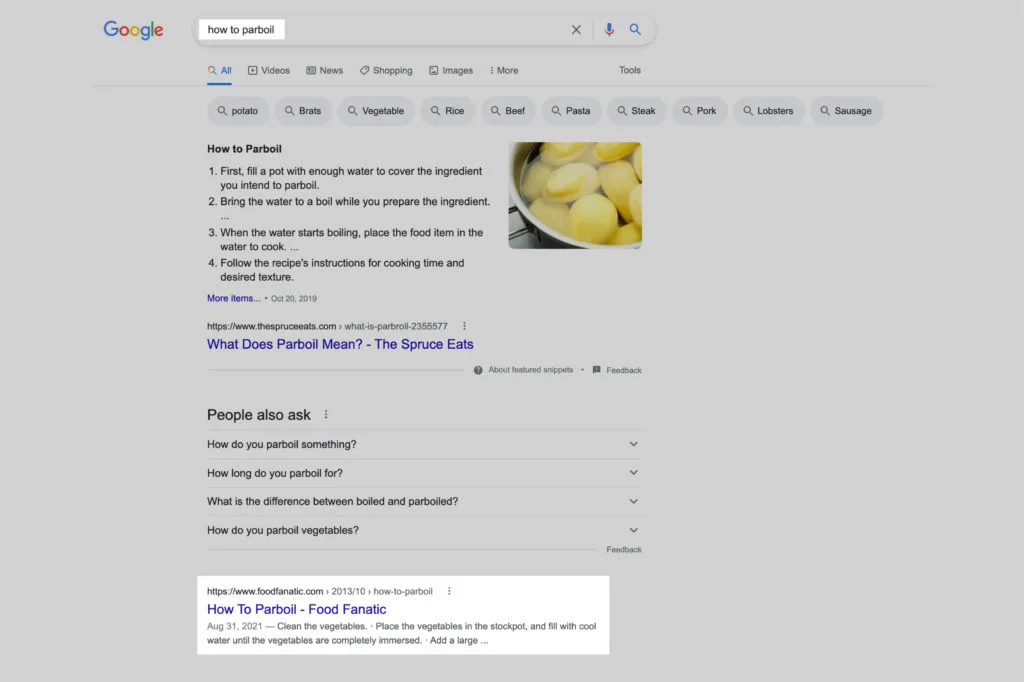
Just like we dug in and updated our original blog post with some new material to freshen it up, we went looking for some more related content as well.
If you pay for a keyword search tool, that’s a great place to head to find related parboiling content, but if you know our original post, you know where we went: Google itself.
Google’s prominent and free “People Also Ask” and “Related Content” sections are often the best and easiest source of ideas, and this was no exception.
We found some great additional parboiling terms right there:
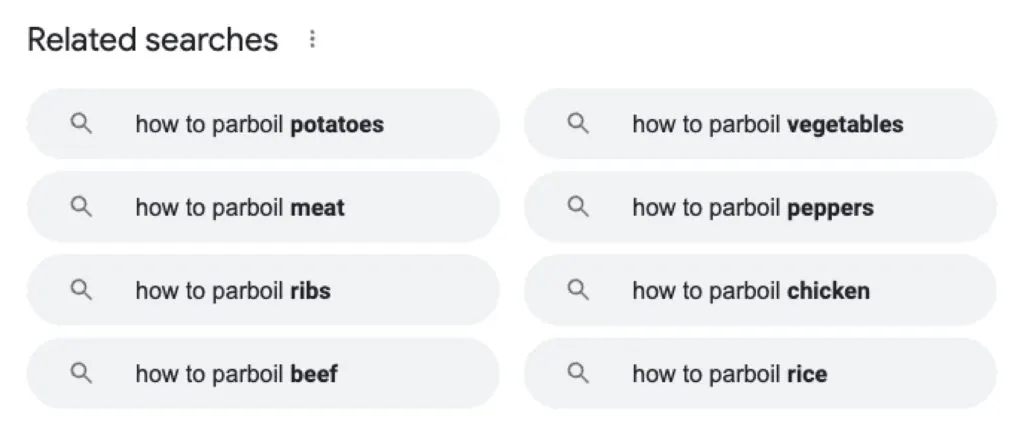
We were able to add five new parboiling posts, and just like our original strategy, each of these posts linked back to our cornerstone content.
Here’s a great bonus tip. In our SEO Like a CEO series, you’ll often hear me say you should think of each post as targeting a single-focus keyphrase.
While that’s 100% true, we also encourage long-form content (think 500+ words, or even this 1,227-word thesis you’re reading) whenever possible.
With long-form content, you expand the playing field, giving yourself opportunities to rank for additional long tail keywords, not only your targeted key phrase.
For this exercise, we hit up Google Search Console’s performance tab to see what other terms our cornerstone and supporting content are ranking on.
You can do this by running a query filter containing parboil, or a page filter with any URLs containing parboil (or even just your cornerstone content).
Through this method, we learned about all kinds of queries we were ranking on – and which we could easily add additional content for.
How to parboil. How long to parboil, etc.
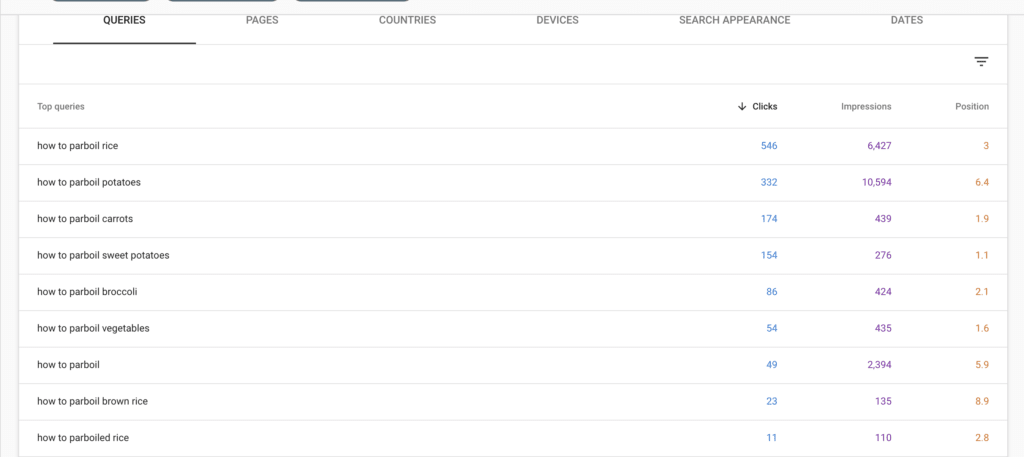
We then went back and updated our content to include those as sections — each with a big H2 heading and the phrase and content below it.
If you’re still with us, you understand where we’re going with this. Just as we updated our cornerstone content, we refreshed our supporting content accordingly.
Any content that was close to ranking in the top three spots (how to parboil rice, in this case) got a link from the other supporting content.
We also repeated Tip 4 for the supporting content; “How long to parboil rice” is just as relevant here.
Sure enough, all of our new supporting content began to rank as well. Overall, we’re up 250% in parboil traffic after what amounted to 10 hours of content creation.
Ten hours of parboiling sounds like a lot, but consider this: Semrush shows that there are over 100K searches for parboiling and related queries every month.
Ranking in the top three for these queries would likely be enough for a site to meet Mediavine requirements by running parboil-related content alone.
Remember, you don’t need a single cornerstone – no matter how much you love parboiling every conceivable food. You can follow this strategy with several niches.
Follow these tips and watch your traffic simmer to a (par)boil. Sorry.
Stay up to date with the latest from Mediavine
 Eric Hochberger
Eric Hochberger
For the past year, Google has been experimenting with a feature called Recipe Quick View – a feature allowing users to click an icon inside search results to view an …
 Eric Hochberger
Eric Hochberger
By now, we’re all aware that generative AI is dramatically changing the web, leaving content creators — whose work is used to train powerful AI models — under duress. But …